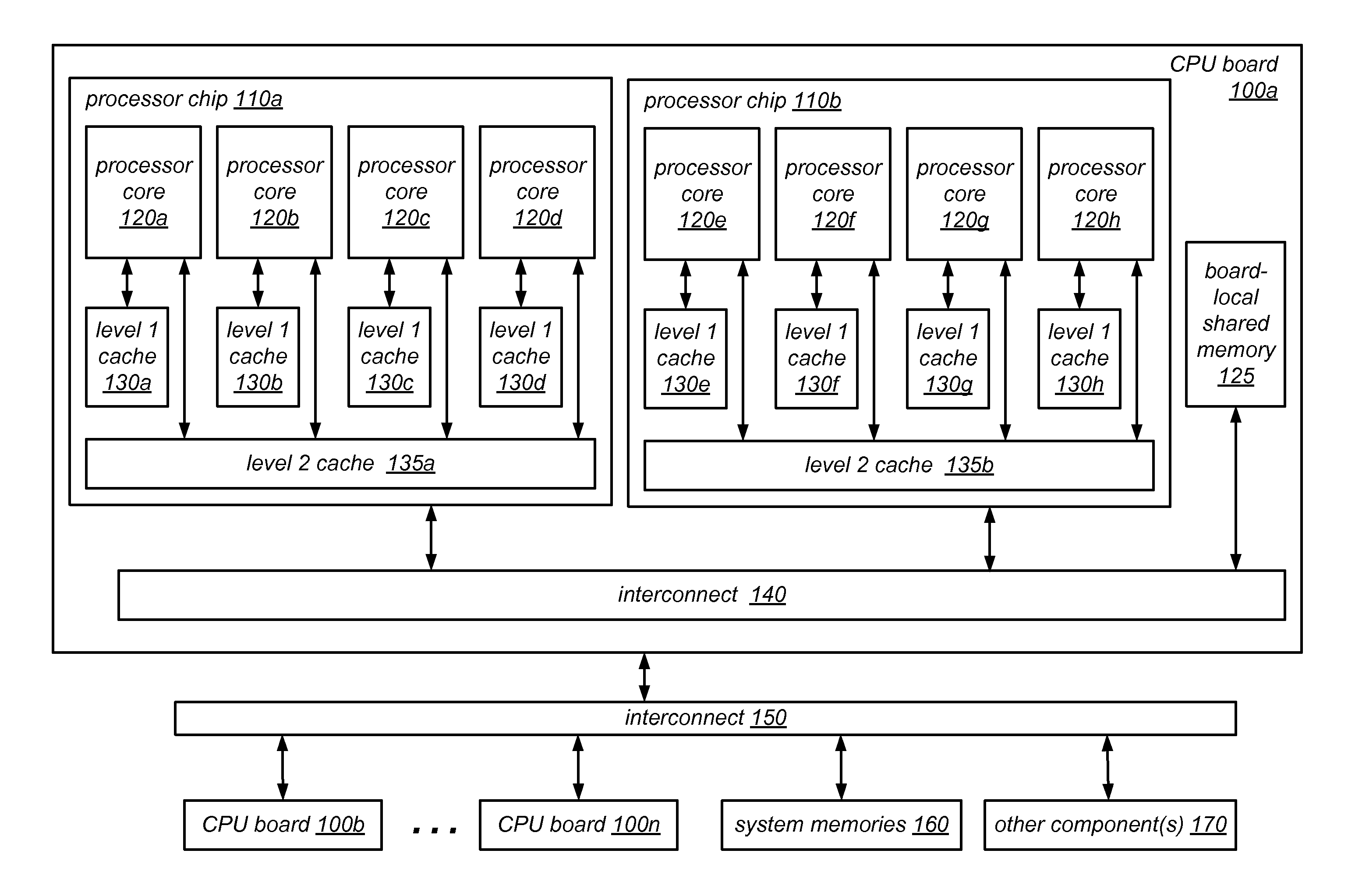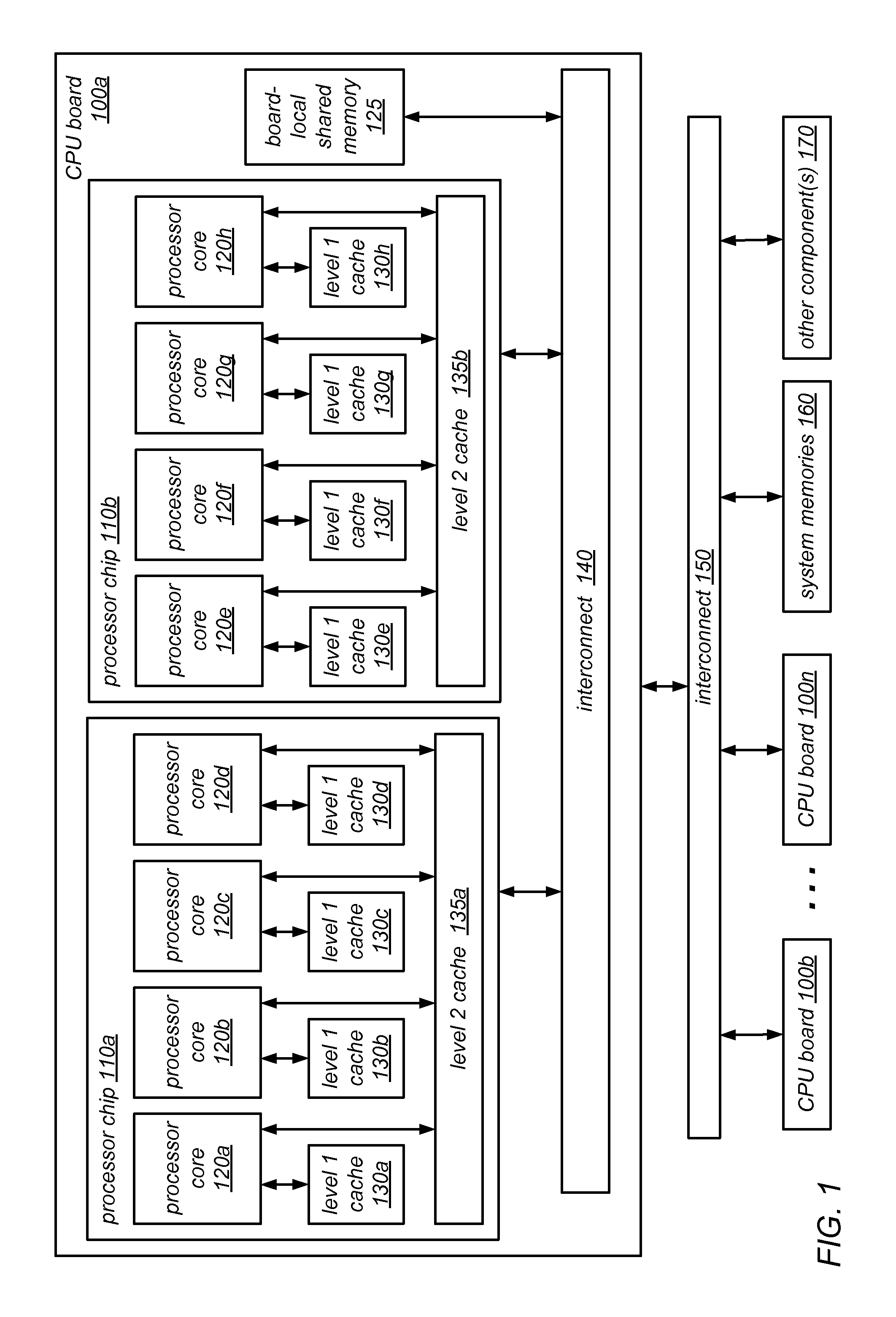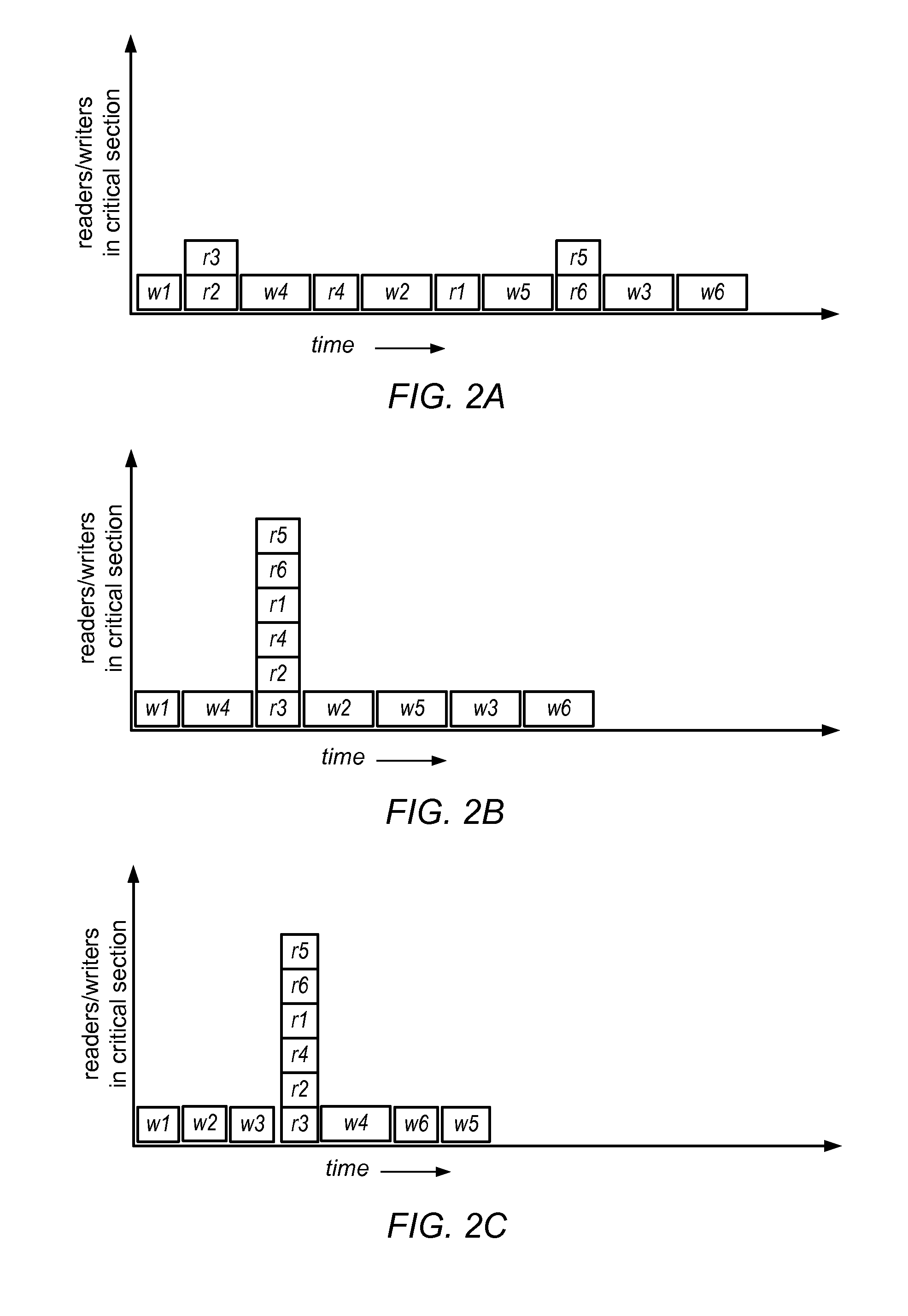System and Method for Implementing Scalable Adaptive Reader-Writer Locks
a reader-writer lock and adaptive technology, applied in the field of reader-writer locks, can solve the problems of degrading the performance of other unrelated programs executing in the system, excessive coherence traffic of the execution program, poor scalability and performance,
- Summary
- Abstract
- Description
- Claims
- Application Information
AI Technical Summary
Benefits of technology
Problems solved by technology
Method used
Image
Examples
Embodiment Construction
[0027]As noted above, reader-writer locks are a class of mutual exclusion locks that permit simultaneous acquisition by more than one thread that intends to access the data protected by the locks in read-only mode or exclusive acquisition by one thread that requires write access to the data protected by the locks. The use of reader-writer locks may enable significantly greater concurrency (as compared to traditional mutual exclusion locks) between threads that acquire a reader-writer lock in read-only mode, and may thus result in much better scalability than can be achieved using traditional mutual exclusion locks. For example, in some embodiments, reader-writer lock may can scale well even on systems having many thousands of CPUs.
[0028]Broadly, reader-writer locks may be thought of in terms of a packing problem in which time passing is indicated on the X-axis and critical section occupation by process (or CPU) count is indicated on the y-axis. For a given reader-writer lock, for an...
PUM
 Login to View More
Login to View More Abstract
Description
Claims
Application Information
 Login to View More
Login to View More - R&D
- Intellectual Property
- Life Sciences
- Materials
- Tech Scout
- Unparalleled Data Quality
- Higher Quality Content
- 60% Fewer Hallucinations
Browse by: Latest US Patents, China's latest patents, Technical Efficacy Thesaurus, Application Domain, Technology Topic, Popular Technical Reports.
© 2025 PatSnap. All rights reserved.Legal|Privacy policy|Modern Slavery Act Transparency Statement|Sitemap|About US| Contact US: help@patsnap.com



